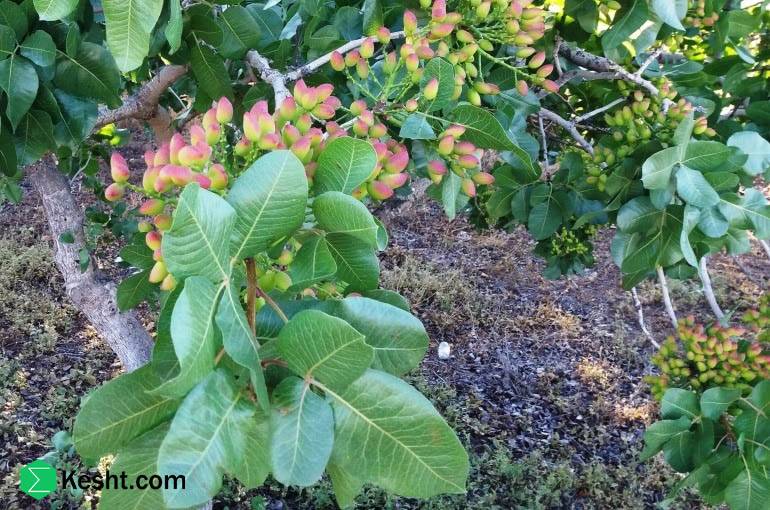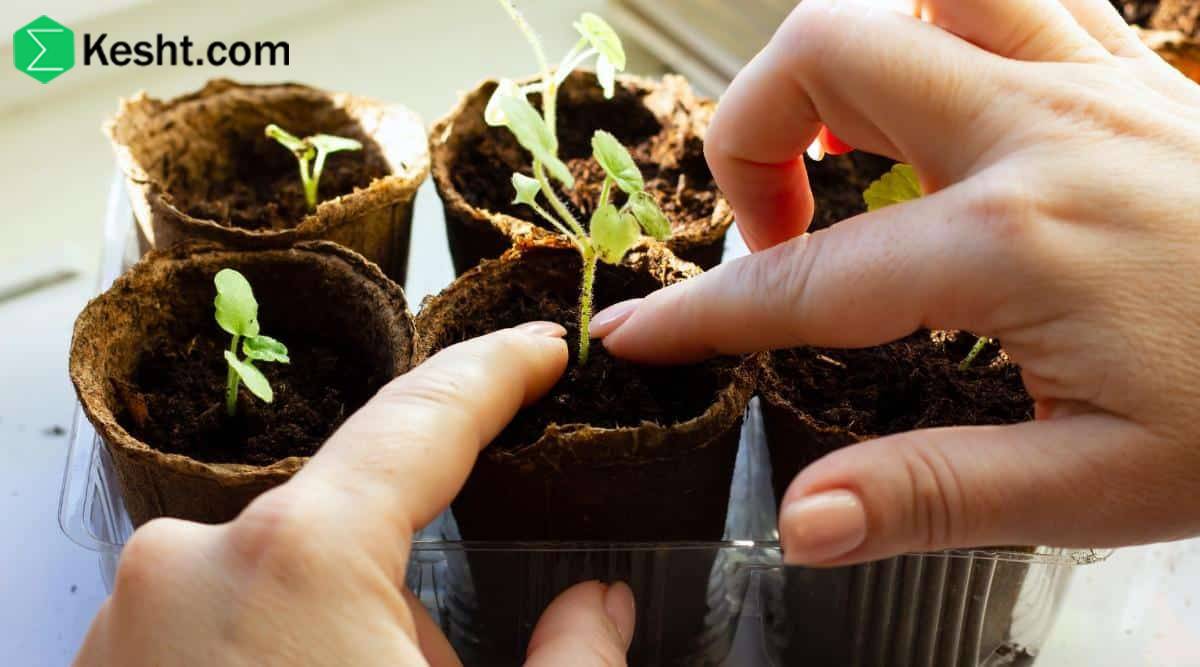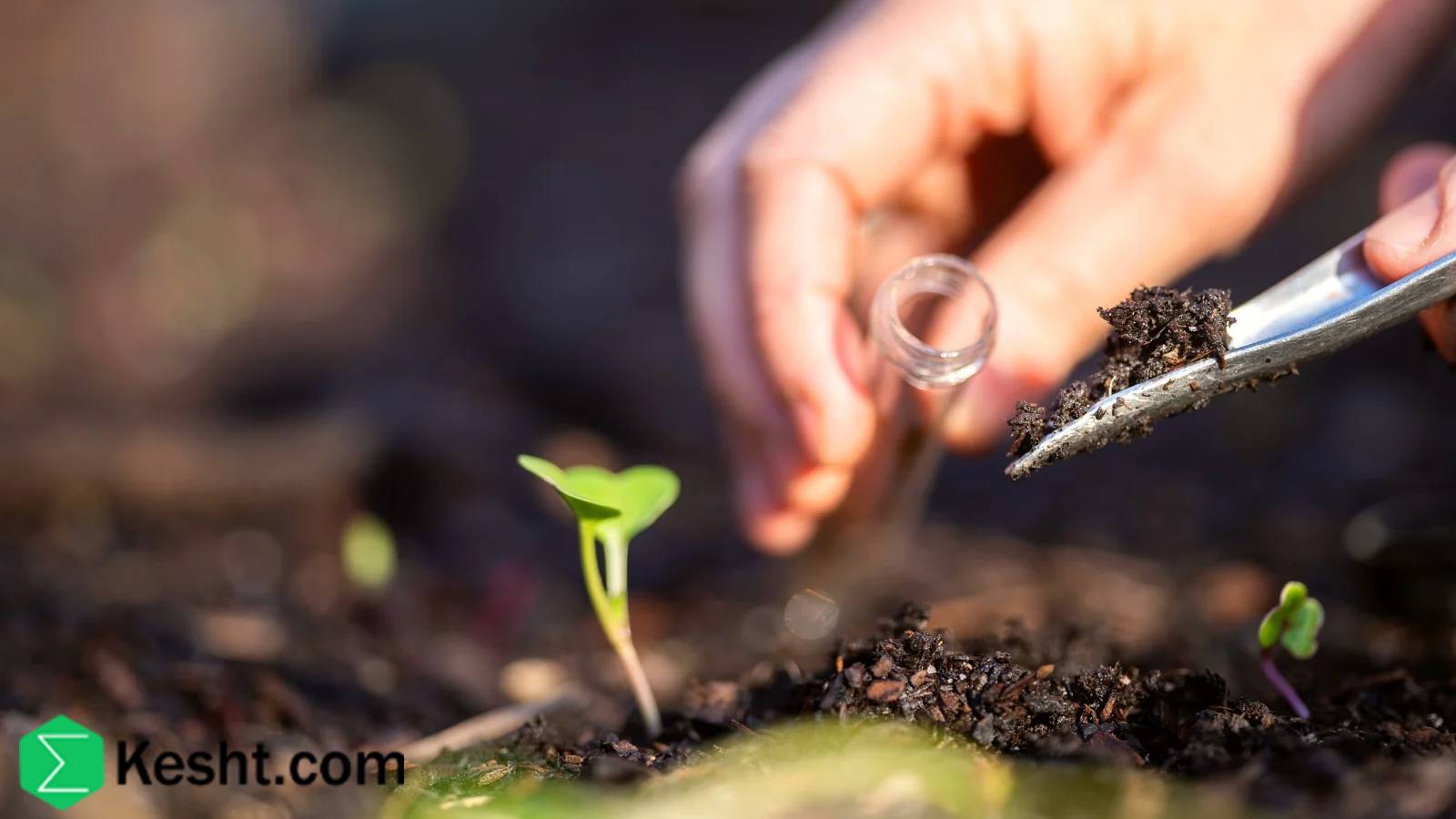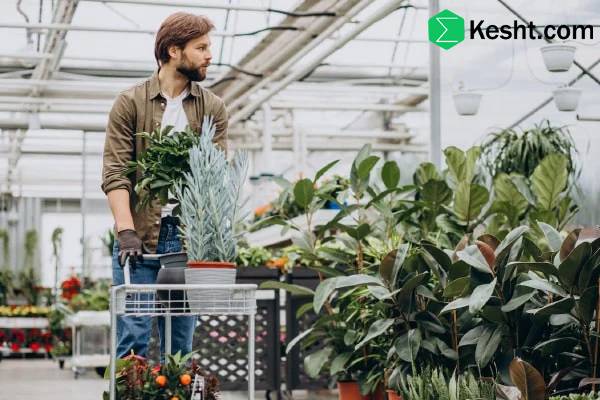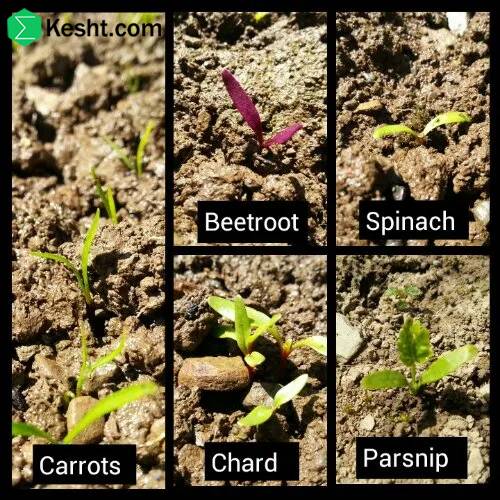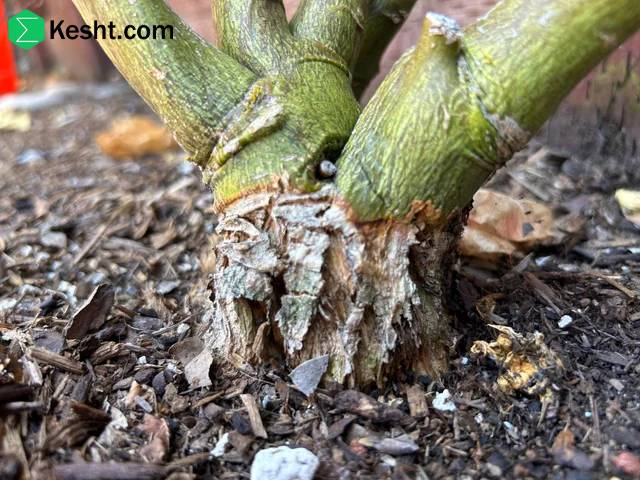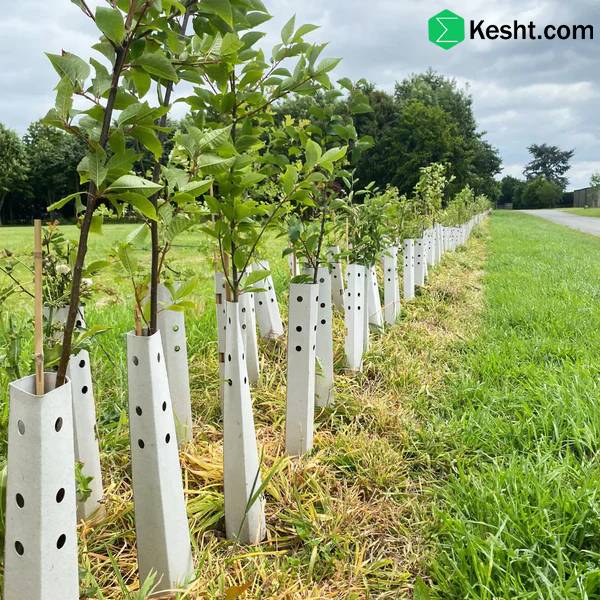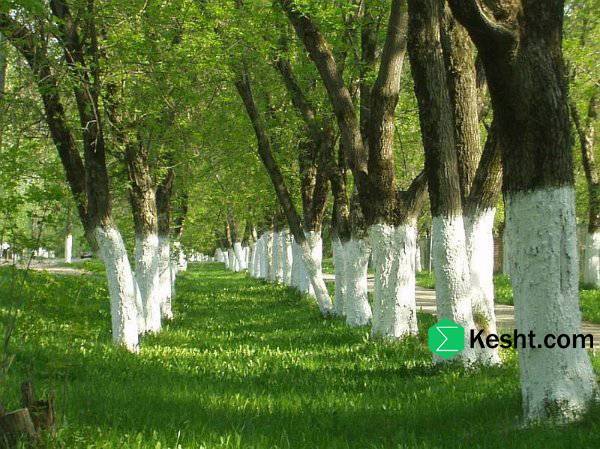Practical guide to factors affecting growth and bearing of pistachio saplings
At a glance
- Genetics (cultivar, rootstock, nursery quality) + site (climate, soil, water) = about 70% of the outcome
- Management (irrigation, nutrition, pruning, pollination, orchard hygiene) = the remaining 30%
- In years 1–3, focus on root development and tree framework; do not encourage precocious bearing.
Genetics and planting material
- Cultivar vs. climate: choose late-blooming types for cold/frost-prone areas; market-favored (Akbari/Ahmad Aghaei) for export; Fandoghi/Kalleh Ghuchi for broader adaptation.
- Rootstock vs. soil/disease:
- P. atlantica (beneh/atlantica): cold-, drought-, and lime-tolerant; stable.
- UCB-1: uniform growth, better Verticillium tolerance; a modern standard.
- P. integerrima: very vigorous in hot regions; more sensitive to cold/Verticillium.
- Nursery quality: certified, grafted plants; straight, healthy taproot (no circling); proper graft height; no wounds/splits.
- Pollinizers (male trees): about 1 male to 8–10 females; plant two male clones (early- and mid-bloom) to cover timing. Ensure air movement for wind pollination.
If you are interested, it is recommended that you read the following article / article title:
What’s the difference between hybrid and seed-grown pistachio seedlings?
Climate and site placement
- Winter chill: shortfall causes uneven budbreak, more blanks, poorer set.
- Spring frost: most sensitive from bud swell through bloom. Use late-blooming cultivars, plant on gentle slopes with cold-air drainage, avoid frost pockets/valleys.
- Heat and radiation: full sun is essential. Extreme heat with water stress can drop clusters and reduce splitting; whitewash trunks and protect young trees from sunburn.
- Wind: light wind aids pollination; strong dusty winds hinder photosynthesis and pollination. Perimeter windbreaks help.
Soil and root-zone conditions
- Texture and depth: deep loams with good drainage are ideal. Waterlogging = root death and Phytophthora risk.
- Salinity/sodicity: pistachio is moderately tolerant, but high EC/SAR without leaching and amendments slows growth.
- pH and lime: calcareous soils are common; expect micronutrient issues (Zn, Fe, Mn). Organic matter and mild acidification of water/soil (guided by tests) can help.
- Organic matter and structure: apply well-matured compost, use winter cover crops/green manures, and avoid crusting/compaction to improve rooting.
Water and irrigation
- Water quality: measure EC, SAR, chloride, boron, bicarbonate. High Cl– and B can scorch tips and lower yield. With high SAR, include gypsum/acidification and planned leaching.
- Scheduling:
- Saplings (years 1–2): more frequent, smaller sets; keep the root zone slightly moist—not saturated.
- Young trees to bearing: deepen irrigations and widen intervals as roots expand.
- Critical periods: bloom to fruit set, and shell hardening to kernel fill—water stress here causes the biggest losses.
- Systems: high-uniformity drip/bubbler that allows salt leaching (LF) and fertigation/acid injection.
Nutrition and fertility
- Macronutrients: N for vegetative growth and fruiting; P for roots; K for kernel fill and quality. Ca/Mg for cell-wall strength and ionic balance.
- Micronutrients: Zn and B are pivotal (Zn deficiency → rosetting/short internodes; B deficiency/excess disturbs fruit set). Fe/Mn are challenging in calcareous soils.
- Scientific monitoring:
- Soil tests before/after planting, then every 2–3 years.
- Mid-summer leaf analysis to fine-tune fertilization.
- Timing: split N (early growth, post-set, and limited postharvest), supply K from early season through start of kernel fill, apply micros via soil/foliar per test results.
- Organics/mulch: conserve moisture, improve microbiology, and buffer surface salinity swings.
Pruning and training
- Years 1–3: structural training (trunk 100–120 cm; 3–4 main scaffolds at 45–60°), staking, trunk whitewash, remove suckers.
- After bearing: light maintenance pruning for even light and airflow; heavy cuts can worsen alternate bearing.
Pollination and crop uniformity
- Wind-pollinated. Place male trees correctly (within rows or a checkerboard) and ensure male–female bloom overlap.
- Two male cultivars with slightly staggered bloom lowers the risk of mismatch.
Pests and diseases (IPM)
- Common pests: pistachio psyllid, scales and mites, some moths/branch borers. Weeds host secondary pests.
- Key diseases: Verticillium wilt, Phytophthora crown/root rot, Alternaria leaf spot, and dieback. Prevent with tolerant rootstocks, proper irrigation/drainage, sanitary pruning, and tool disinfection.
- Orchard hygiene: remove mummified/leftover nuts, manage weeds, track traps and thresholds, rotate active ingredients when needed.
If you are interested, it is recommended that you read the following article / article title:
How to boost the environmental resilience of hybrid pistachio seedlings
https://ekesht.com/en/blog/how-to-boost-the-environmental-resilience-of-hybrid-pistachio-seedlings
Managing alternate bearing
- Causes: heavy on-year crop + water/nutrient stress = low carbohydrate reserves for the next year.
- Mitigation:
- Keep irrigation and nutrition steady—especially in on-years.
- Avoid severe pruning and erratic fertilization.
- Maintain moderate crop load with light pruning and, experimentally, cluster management.
Orchard design and operations
- Spacing: commonly 6×6 to 7×7 m (rootstock/vigor dependent). In shallow/saline soils, wider spacing helps.
- Row orientation: align with prevailing wind to improve pollination and uniform light.
- Orchard floor: managed cover crops/mulch to prevent erosion and improve infiltration; in years 1–2, keep a weed-free circle (≥1–1.5 m) around each sapling.
Sensitive growth and bearing windows
| Window | Key event | Critical management |
| Winter dormancy | Meeting chill requirement | Minimal/no irrigation (climate-dependent), fall nutrition plan, orchard sanitation |
| Bud swell → end of bloom | Pollination and fruit set | Frost protection, gentle/regular irrigation, micronutrients per test |
| Post-pollination → shell hardening | Fruit retention | Avoid water/nutrient stress; scout pests |
| Kernel fill | Quality (split/percent fill) | Adequate K and water, heat-stress control, even canopy light |
| Postharvest | Rebuilding reserves | Restorative irrigation/nutrition, sanitary pruning, leaching salts if needed |
Quick checklist for saplings (years 1–3)
- Healthy, certified grafted sapling + rootstock suited to soil/climate.
- Correct planting: wide/shallow hole, fix root circling, set crown at proper height.
- Protection: stake, whitewash trunk, rodent guards, light mulch.
- Irrigation: shorter, more frequent sets; wet to root depth and let the surface lightly dry between sets.
- Nutrition: gentle, split feeding; micronutrients per tests. Avoid high N.
- Structural training; remove competing shoots and suckers.
- Weed control around saplings (weed-free circle ≥1–1.5 m).
- Scout pests/diseases and act in time.
common mistakes that limit growth/yield
- Buying non-true-to-type or infected saplings
- Mismatched cultivar/rootstock to climate/soil
- Waterlogging at the trunk/crown
- Ignoring water quality (EC/SAR/chloride/boron)
- Erratic fertilization or excessive nitrogen
- Skipping soil/leaf testing
- Neglecting pollinizers (count/overlap)
- Heavy pruning in on-years
- Poor weed control and orchard hygiene
- Failing to protect saplings from sunburn and wind
If you are interested, it is recommended that you read the following article / article title:
Methods for producing hybrid pistachio seedlings
https://ekesht.com/en/blog/methods-for-producing-hybrid-pistachio-seedlings
We are the “ekesht” platform — a subsidiary of Samin Atlas Iranians and the only official exporter of BlueLabel seedlings in Iran
Why Blue Label?
Because the world only trusts these seedlings!
Ordinary seedlings (without labels or other labels), even if one of them is infected, can destroy your entire garden — without you realizing it!
But the advantage of Blue Label seedlings:
✅Each of them has a global barcode
✅Tested in advanced laboratories
✅Free from any viruses and microbes
✅The only seedlings that are allowed to be legally exported!
This is important for you if:
- You want to build a garden that is productive and hassle-free
- You are looking for a long-term investment in gardening
- You want to start without stress, without losses, without surprises!
Blue Label seedlings = peace of mind
Because when the seedlings are healthy, the garden stays healthy — and real profits come!
Contact us now — before a random seedling destroys your garden!
Healthy Seedlings = Fruitful Garden = Smart Investment
And that’s exactly what we do at ekesht.
ekesht platform (with fifteen years of practical and successful trade experience with Russia, Kazakhstan, Iraq, China, Turkmenistan, Turkey, etc.) is ready to cooperate with people active in the field of agriculture.
For more information and additional information, please contact us via social media, phone call or email
Phone number:
Email:
Social media address:
